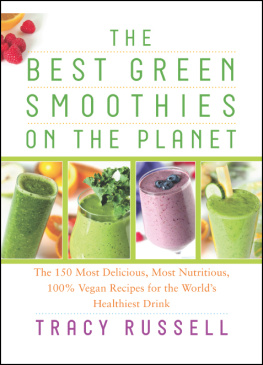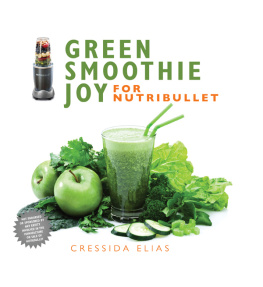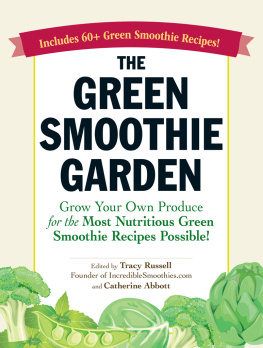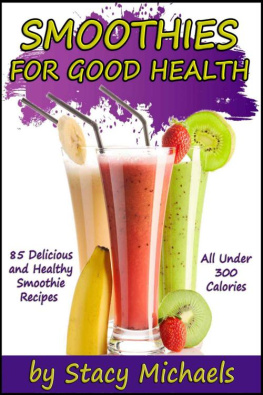
Text Copyright 2013 Kristine Miles. Design and concept copyright 2013 Ulysses Press and its licensors. All rights reserved. Any unauthorized duplication in whole or in part or dissemination of this edition by any means (including but not limited to photocopying, electronic devices, digital versions, and the Internet) will be prosecuted to the fullest extent of the law.
Published by
Ulysses Press
P.O. Box 3440
Berkeley, CA 94703
www.ulyssespress.com
ISBN: 978-1-61243-197-0
Library of Congress Catalog Number 2013931791
10 9 8 7 6 5 4 3 2 1
Acquisitions editor: Keith Riegert
Editor: Lauren Harrison
Proofreader: Elyce Berrigan-Dunlop
Design: Jenna Stempel
Cover illustrations: front Morphart Creation/shutterstock.com; back dandelion Morphart Creation/shutterstock.com, strawberry leaves
Shlapak Liliya/shutterstock.com
Index: Sayre Van Young
Illustrations: see page 99
Distributed by Publishers Group West
IMPORTANT NOTE TO READERS: This book is independently authored and published and no sponsorship or endorsement of this book by, and no affiliation with, any trademarked brands or other products mentioned or pictured within is claimed or suggested. All trademarks that appear in this book belong to their respective owners and are used here for informational purposes only. The author and publishers encourage readers to patronize the quality brands and products mentioned in this book.
To my dear parents and incredible husband, who always support me and never doubt my ability to achieve anything.
Contents

Smoothies come in many forms. Traditional smoothies are a combination of dairy milk or yogurt blended with ice and fruit, such as bananas or berries. Smoothies have also evolved to become supplemental delivery systems for protein powders and superfoods such as spirulina, maca, cacao, and acai berry. But what are green smoothies?
Green smoothies are smoothies with raw leafy greens blended through them. The emphasis is on leafy greens, not any green vegetable such as broccoli, peas, or zucchini. Traditionally, green smoothies are vegan, being a combination of sweet fruit, water, and leafy greens. However, green leaves can of course be blended through any type of smoothie, whether it is dairy- or plant-based. For the purposes of this book, green smoothie recipes have been designed without dairy products; some recipes include coconut water or nut milk.
There are many advantages to adding more greens to your diet, including the abundance of fiber, vitamins, minerals, and antioxidants, plus the alkaline value of raw greens and the benefits of blending rather than chewing.
If you have never had a green smoothie before, I can assure you that they taste a lot better than they look or sound. They do look green (and at times, other odd brown or purplish colors); however, they taste like the fruit in them. The ideal combination for 1 liter of green smoothie is 2 cups of fruit, 1-1/2 cups of liquid, and 1 to 2 handfuls of leafy greens. This amount is perfect for two servings. The sweetness of the fruit offsets the flavor of what would otherwise be a bitter green drink. When using watery fruits like melons, recipes will use more fruit and little to no extra liquid.
To make a green smoothie, you put greens, coarsely chopped fruit, and liquid into a blender and blend for 1 to 2 minutes. Spinach is a great green for green smoothie beginners to start with as the flavor is mild and the color frequently spectacular. It is recommended to aim for 40 percent greens and 60 percent fruit. For beginners, start with a small amount of greens and gradually increase over time to 40 percent greensor more. If you do happen to overdo the greens, try adding some sweetener, a bit of vanilla extract, or some lemon juice to take the edge off.
Specific greens are suggested for each recipe in this book taking into account variety, the season, and flavor matching. Should you not have the suggested green available, of course feel free to substitute it for something else. The amount of green is also up to you. For beginners, start with a small handful and build up as tolerated. For experienced green smoothie drinkers, you will know how much you like to use. The amount of leafy green suggested takes into account how strong the green is; however, this can vary worldwide. For instance I understand romaine lettuce has a stronger flavor in Australia than it does in the U.S.
For those with underactive thyroid issues who wish to avoid raw goitrogenic greens, substitute as necessary. Leafy greens considered goitrogenic include bok choy, cabbage, collards, watercress, kale, radish tops, turnip greens, and, to a lesser extent, spinach.
Sweeteners are suggested for some recipes to compensate for the use of semisweet and sour fruits. Feel free to replace the suggested sweetener (usually dates, honey, or agave) with an alternative should you prefer one, like coconut nectar or stevia. See for more info on natural sweeteners.
for how easy it is to make homemade almond milk.
For regular green smoothie consumers, a high-powered blender is highly recommended, such as Vitamix or Blendtec brands. My preferred brand is Thermomix, which is a multifunction appliance that includes a high-powered blender function. It is readily available in the UK, Europe, and Australia. Less expensive blenders still work, but you may need to rest the motor if its gets warm with the effort of blending the greens for a couple of minutes, and it will break down quickly with very regular use.

Green Smoothie Inspiration

My inspiration to drink green smoothies came from reading Green for Life by Victoria Boutenko in 2007. I have had a green smoothie for breakfast almost every day since, which is well over 1,500 smoothies! My passion for the humble green drink and knowledge of the human body resulted in the creation of my own blog in 2008, and subsequently my first book, The Green Smoothie Bible, published in 2012.
The reason I love green smoothies and continue to drink them for breakfast is they see me through all the way to lunchtime and they are just so convenient. The combination of fiber, fruit-based carbohydrates, and an abundance of nutrients from the fruit and greens results in stable blood sugar and I am satisfied. I can also blend my smoothie quickly, and if theres no time to drink it at home, it goes in a glass jar and I take it to work with me. Whenever I have a more traditional breakfast, I dont feel the same. If I only eat fruit or have a juice, I need to eat a couple of hours later, or if I have something grain- or nut-based, I just feel heavy in the guts and sluggish.
I am a once-a-day, half-a-liter green smoothie drinker. I know others that drink 1 to 1-1/2 liters daily and others that just have one occasionally. Whether you drink a lot or a little, green smoothies are beneficial to your health. You dont need to be raw vegan to enjoy green smoothies, and you dont have to drink them every day, but the more blended greens you can get into your diet, the better.
Next page












